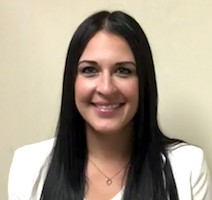Home repairs can be costly, and when you’re a landlord maintaining a rental property, those repair costs have a dramatic impact on your cash flow and your ROI. While you’re working to keep your maintenance costs at a minimum, ensure you are clear on who is responsible for what repairs in your rental property. Why lose a good tenant on not performing the necessary landlord maintenance items? At the same time, hold the tenant accountable for items a tenant is responsible for.
Make Sure Your Lease is Detailed
This really starts with a strong and specific lease (downloading off the internet won't cut it). Have an attorney prepare the lease for you (our Orlando property management firm can assist you in an attorney prepared lease at a good price). It should stipulate who is responsible for all the routine maintenance, such as lawn care and pool maintenance. Also, is must include the consequences of any tenant damage that is discovered during inspections or after the tenants move out. Most landlords require their tenants to change the air conditioning filters and replace the light bulbs. If there are other repairs that you expect your tenant to make, the lease needs to reflect that.
Identify Issues Caused by Tenants
When a tenant reports maintenance that is needed, make sure you know how to troubleshoot the problem and identify its cause. For example, if a bathroom floods after a tenant’s toddler flushed his toys down the toilet, that’s an expense your tenant should incur. If there are holes in the living room walls from where the tenant tried to mount a large television; that’s another case where you should charge the tenants for repairs.
Accept Normal Wear and Tear
While you can charge your tenants for incidents of damage, you cannot require them to pay for regular wear and tear to the property. Small nail holes in the walls from where pictures were hung are expected. A 'bed mark' (gray or black mark on the wall from where the bed was up against the wall). If you have a tenant who has lived in your property for 5 or more years, worn carpet in high traffic areas is also considered wear and tear. Scuff marks from where the sofa, like a bed, was pushed against a wall cannot be considered damage. It’s very important that you know the difference between damage and wear and tear (see some of our other blogs concerning charges on a security deposit claim).
Documenting Condition at Move In and Move Out
The best way to protect yourself and your property is to properly document the home’s condition before a tenant moves in.  You can compare that inspection report to the way the house looks after a tenant moves out. That will give you a clear picture of what the tenant’s responsible for when it comes to repairs and maintenance. Take pictures, then more pictures, maybe videos, and certainly written notes. Important tip: Have the tenant sign and date the move in walkthrough report.
You can compare that inspection report to the way the house looks after a tenant moves out. That will give you a clear picture of what the tenant’s responsible for when it comes to repairs and maintenance. Take pictures, then more pictures, maybe videos, and certainly written notes. Important tip: Have the tenant sign and date the move in walkthrough report.
If you have any questions about how to hold tenants responsible for their repairs, please contact usat Orlando Realty & Property Management.


